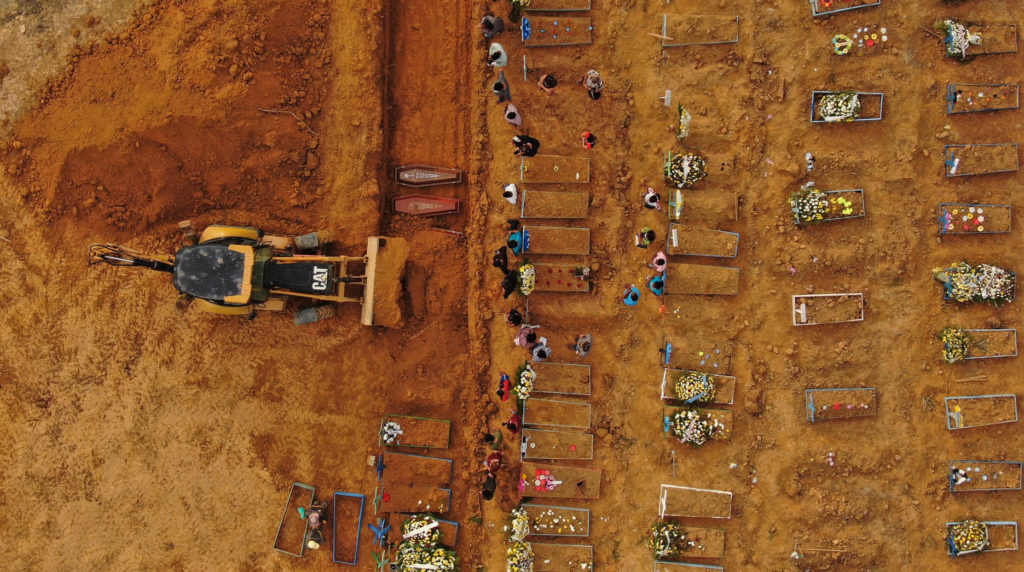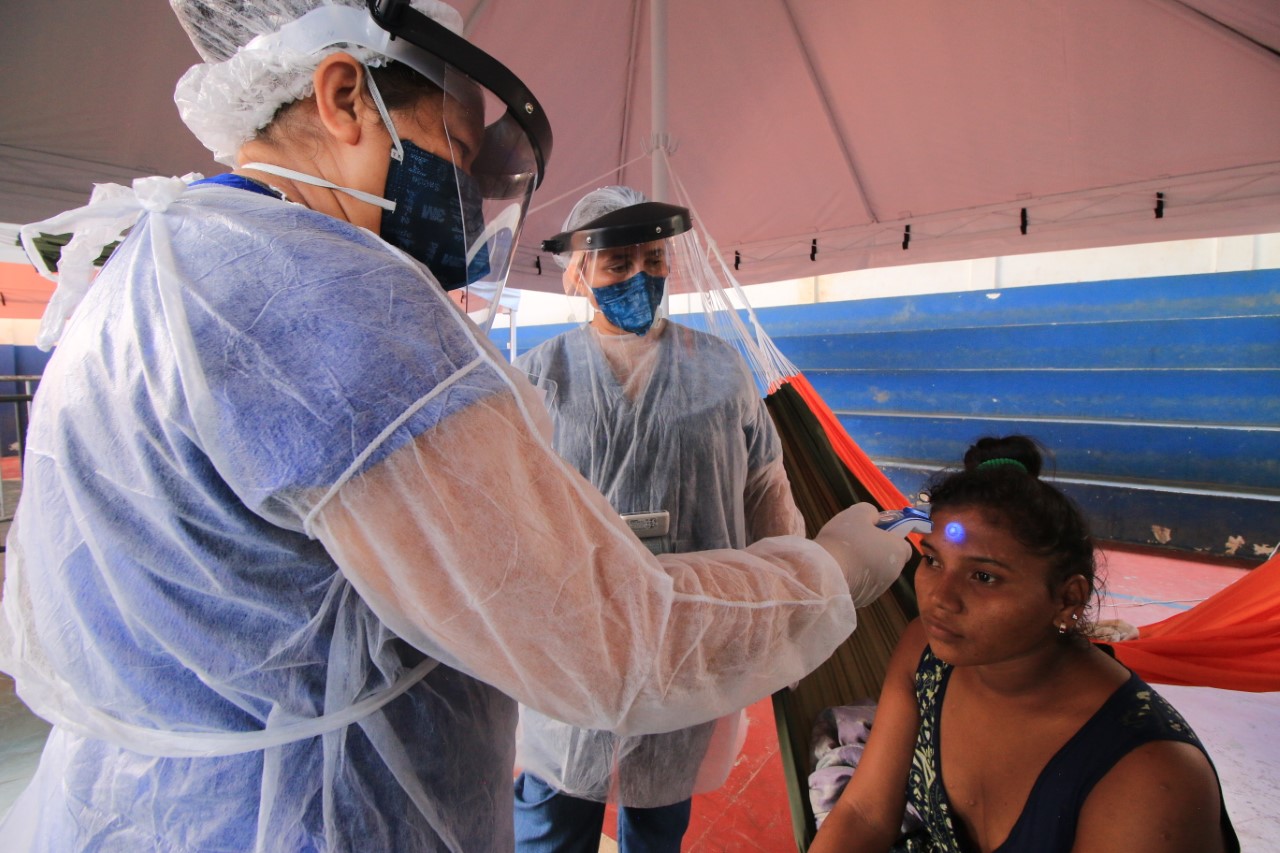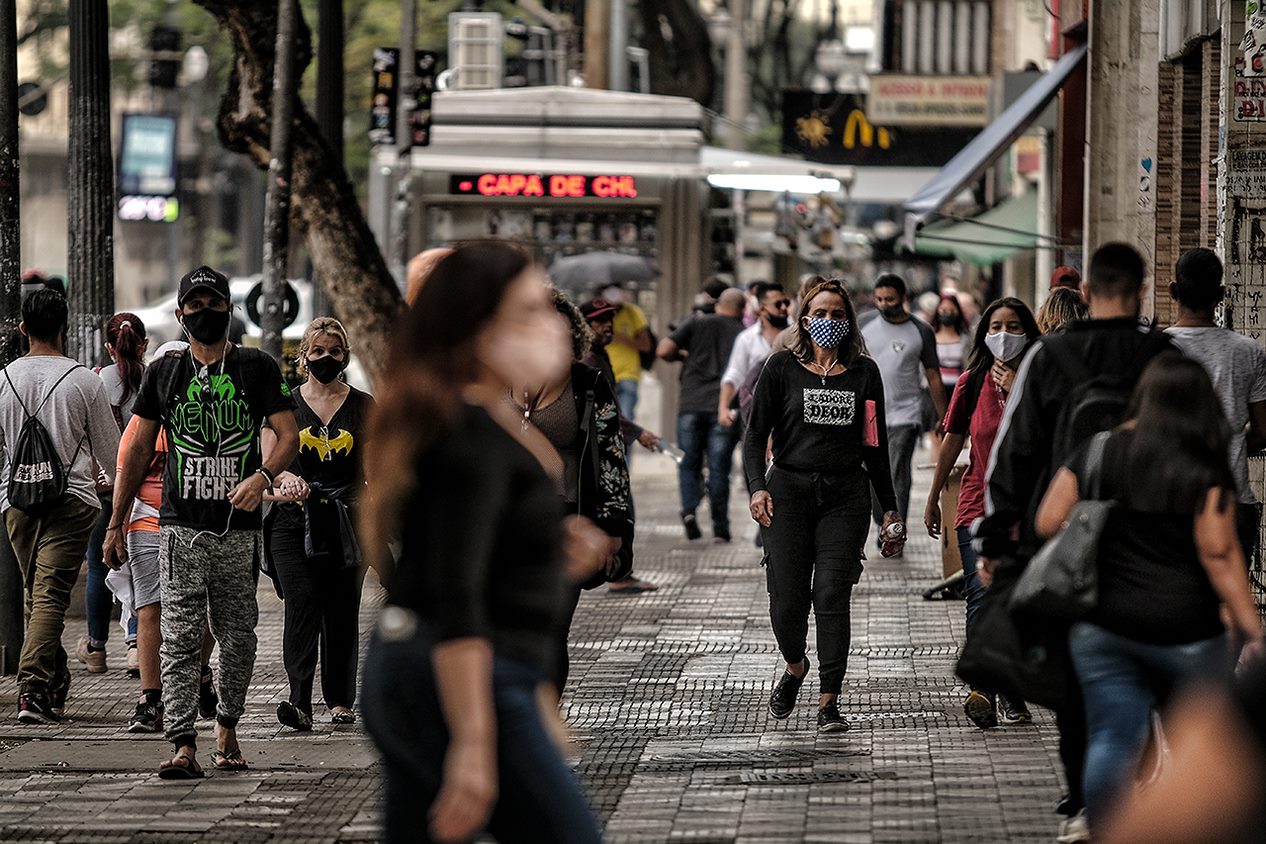RIO DE JANEIRO, BRAZIL – Day after day, over 30,000 cases of Brazilians infected with COVID-19 are reported, and the daily death toll has exceeded the one thousand mark several times. The country totals almost 930,000 cases and over 45,000 deaths.

The waves of the pandemic have shifted from the wealthiest sections of the population to strike hard the poorest, and from coastal cities to the interior, threatening the most vulnerable and neglected – favela residents, street dwellers, and indigenous and riverine communities.
The state of Amazonas has the highest per capita mortality rate from COVID-19. On reaching the capital Manaus, in late April, the medical teams were faced with an overwhelming situation in hospitals. “The four main hospitals in Manaus are crowded and the dedicated medical teams work with exceptionally ill patients, who often come in too late or are too far away to be saved,” said Dr. Bart Janssens, then Emergency Coordinator of Doctors Without Borders (MSF).
“A high proportion of patients admitted to intensive care units are dying and a large proportion of physicians are getting sick”. The astounding mortality rates are due to the increasing number of people in a very critical condition who need intensive oxygen treatment and to insufficient beds and staff in ICUs. Over several weeks, hundreds of people became increasingly ill in common hospital wards, waiting for a discharge from an ICU bed.
In Tefé, a city located a day and a half away on the Amazon River by boat, 523 km from Manaus, doctors face an even more challenging situation. “When I visited the city in the second half of May to assess the situation, the hospital’s management team told me that virtually all patients with COVID-19 who needed intensive care had died,” Janssens said. “They didn’t have enough specialized personnel to treat the very sick patients coming into the hospital.”
High mortality rates are also being observed in Rio de Janeiro, São Paulo, and more recently in Boa Vista, the capital of Roraima, a state bordering Venezuela.
The ability to respond locally to the needs is being seriously affected. Nurses are dying from COVID-19 in Brazil faster than in any other country in the world, with the number of suspected and confirmed cases among professionals jumping from 230 in early April to 11,000 a month later, and nearly 100 nurses killed by the disease each month.
Testing is taking place at an astonishingly slow pace, at a rate of 7,500 tests per million people, which is only one tenth of the United States rate (74,927 per million) and one twelth of Portugal’s rate (95,680 per million). The situation is extremely serious: Brazil is behind only the United States as the most affected country in the world, both in the total number of cases and in the number of deaths. Vulnerable groups and neglected areas, such as the Amazon, are suffering the greatest impact of the crisis.
“It’s no accident that Brazil is suffering so acutely,” says Ana de Lemos, executive director of MSF-Brasil.
“We have known for a long time that Brazil is a country with enormous inequalities, but it is as if COVID-19 has lit a spotlight that painfully exposes a healthcare system that suffers from structural inequalities and the exclusion of a large number of poor or homeless people and regions like the Amazon, where adequate investments have been lacking for decades. We see significant efforts implemented at state or local levels to address the pandemic, but we also see a huge misalignment in guidelines, policies, and the broad approach between the federal government and the different regions. This spreads unrest and serves to undermine the national response – with government statements sometimes dismissing the thousands of COVID-19 deaths as no more than any other fatalities, or even with utter disregard”.
The MSF launched six specific emergency actions in response to COVID-19: three projects in Amazonas and one in Roraima,also in the Amazon region; one in Rio de Janeiro, and one in São Paulo. Some of these initiatives are now well established, others are in their early stages.

Complexity and vulnerability in the Amazon
The Brazilian Amazon region, vast and sparsely populated by indigenous communities, is a particularly unique – and vulnerable – area. The region has suffered for years from the invasion of mining, deforestation, and agriculture and a chronic reality of poor investments in health. When the disease came, its disastrous impact soon became evident.
“COVID-19 spreads quickly and sometimes unpredictably,” says Brice de le Vingne, coordinator of the MSF’s response programs to COVID-19. “We shifted the focus of our attention from coastal cities to the large Amazon city of Manaus when reports of a large number of cases and collective burials began to emerge. By then, the situation was already at alarming levels – and with a small team, we had to quickly determine where we could help best”.
In Manaus, the MSF team started managing 48 beds, 12 of which were in the ICU and one 36-bed ward for patients in critical condition at the 28 de Agosto Hospital; they increased the treatment capacity for the disease that was already present there, where the team was exhausted after a strenuous fight against it. The MSF team on site includes specialized ICU personnel, some with prior experience in the treatment of COVID-19 in other countries, and implemented new protocols for non-invasive oxygen treatment.
In doing so, it was able to provide a safer environment for better clinical care. Since medical activities began on May 28th, the MSF facilities have recorded an 80 percent or higher occupancy rate. Although it is too early to draw conclusions, there are good indications that an increasing number of patients will be successfully cured, even if they present very severe symptoms.
Outside the hospital, Manaus is a busy city with almost three million inhabitants, where there are few signs of compliance with recommendations regarding physical distancing. In trade there are many workers coming from other towns, which makes these places potential hotbeds of virus spread. The city has an indigenous population of about 30,000 people, with at least 30 ethnic groups and about 20 languages.
They traditionally have a more precarious access to the healthcare system, which is exacerbated in an emergency situation, and is not a priority in most response actions when COVID-19 hit the city. In partnership with City Hall, the MSF manages a medical isolation center for indigenous Warao patients with mild COVID-19 symptoms. These people came from Venezuela in search of economic opportunities and many of them have lived in shelters in Manaus for several years.
There are indications that the peak of transmission in Manaus may already have passed, although the situation is still seriously critical and the last few weeks have left as one of its consequences the real need for psychosocial support for doctors who have worked to cope with the peak in the number of deaths. Now, the pandemic wave is shifting into the interior of the Amazon, where the number of cases is growing and indigenous communities are in a potentially catastrophic situation of vulnerability to disease.
Often with reduced access to basic prevention tools, such as individual protective equipment (IPEs), these people have very few options for receiving medical care, and long trips to regional hospitals or health clinics entail an additional risk of virus transmission in crowded public transports.
“We are working to find the most effective and cautious way to interact with remote communities in the Amazon.” In parallel, two initial stages of emergency response are underway to offer care for moderate cases and intensive treatment in the municipalities of Tefé and São Gabriel da Cachoeira, both accessible only by multi-day boat trips or small aircraft from Manaus.
“In Tefé, on the banks of the Amazon River, the local hospital requested the MSF’s assistance. We expect to manage the ICU. We have had information that a staggering proportion of patients with COVID-19 are dying. We also plan to provide medical assistance at six peripheral health posts. These actions should provide an invaluable and vital option for indigenous communities – they can avoid the long trip to Manaus in search of treatment.”
In São Gabriel da Cachoeira, on the banks of the Rio Negro basin, an affluent of the Amazon, and 852 km from Manaus, the MSF is opening a treatment center that will complement the capacity of the hospital dedicated to COVID-19. In partnership with a local organization, the MSF will convey healthcare educational information to the population in this remote region.
The state of Roraima, on Brazil’s northern border with Venezuela, is also part of the large Amazon region and has been experiencing a critical stage of the pandemic for the past two weeks. The curve of COVID-19 contaminations has been growing sharply in the capital, Boa Vista. The city currently records a high rate of new infections and over a quarter of the population has been infected with the disease.
The pre-existing MSF project in Roraima for Venezuelan migrants and asylum seekers has already been extended to include preparatory actions and healthcare promotion initiatives related to COVID-19. The only public hospital in Boa Vista is overburdened and patients are being attended in hallways, or even sent home untreated, due to crowding.
A new field hospital, with more than 700 beds, was set up specifically to address the pandemic, and the MSF is supporting its activities with intensive care training and supervision of ICU activities in order to contribute to its successful operation.
“At the moment we are facing an acute stage of the COVID-19 crisis in Boa Vista,” says Michael Parker, Roraima’s project coordinator. “The MSF’s response has come with reinforcing our medical work beyond refugee support, providing doctors and nurses for a field hospital and taking over training and supervision for moderate and severe cases at this critical time”.

Where it all started, it’s far from over
COVID-19 reached Brazil initially through the wealthiest populations of major cities, such as Rio de Janeiro and São Paulo, most likely introduced by Brazilians who traveled abroad. For several weeks, the spread of the virus was restricted to more privileged regions. But the transmission gradually spread to poorer neighborhoods, with devastating impact.
Street dwellers, drug users, elderly people in nursing homes, and favela residents, who were already marginalized and facing obstacles to get medical assistance, are now in an even more dire situation, which places them at risk of dying with little chance of getting help.
“As has happened in many countries, the pandemic has led many people to lose their livelihoods,” says Dr. Ana Leticia Nery, project coordinator in São Paulo. “But in São Paulo, there were already 24,000 people on the streets and, with the health system pushed to its limits, the obstacles already preventing access for this extremely vulnerable population became even more evident. The pandemic has dragged more people into extreme poverty, leaving them homeless – and in many cases hopeless – on the streets.”
“Drug use and dependence, as well as pre-existing medical conditions such as tuberculosis, heart disease, and HIV, increase vulnerability. It’s sad to see people suffering and having trouble accessing the healthcare system, but there are things we can do to help them access assistance, the same treatment that any other citizen would have.”
In São Paulo, the MSF teams are working to assist street dwellers in central neighborhoods, as well as slum dwellers in peripheral areas of the municipality, where the contrast between wealth and poverty is striking.
“We have partnered with local organizations and the city government to promote medical activities in two isolation facilities for street dwellers who have tested positive for COVID-19 and have mild or moderate symptoms. We are also focusing our efforts on alcohol addicts or crack users, with a health promotion and assistance program in the central São Paulo area known as Cracolândia because of the high dependency rates.”
In Rio de Janeiro, the teams are offering training on infection control and prevention in healthcare facilities and hospitals, as well as health promotion actions in food centers for vulnerable people. MSF also actively monitors people with symptoms of COVID-19. More recently, MSF began to assess the situation in Rio’s favelas. In these areas, the healthcare system’s capacity, already stretched to its limits, is now collapsing; several health posts have had to close and living conditions show that physical distancing is virtually impossible, raising the risk of spreading the virus.
Reaching the limit
MSF has also been conducting a host of health promotion, screening, and diagnostic activities at most project sites and is providing technical advice on infection prevention and control for medical facilities and nursing homes. Concurrently, MSF teams are extending psychosocial support to medical teams who have experienced appalling situations when dealing with such high mortality rates from a disease that can cause death in a particularly painful way. The opening of a palliative care unit in São Paulo for critically ill patients is also under assessment.
“The MSF teams continue to explore ways to expand activities in partnership with local authorities, but we are reaching our limits. It is clear that there needs to be a more focused response from the federal government to COVID-19. And that community leaders, local organizations and front-line professionals must have direct support and need basic tools, from inside as well as outside Brazil.”
Source: MSF Doctors without borders

